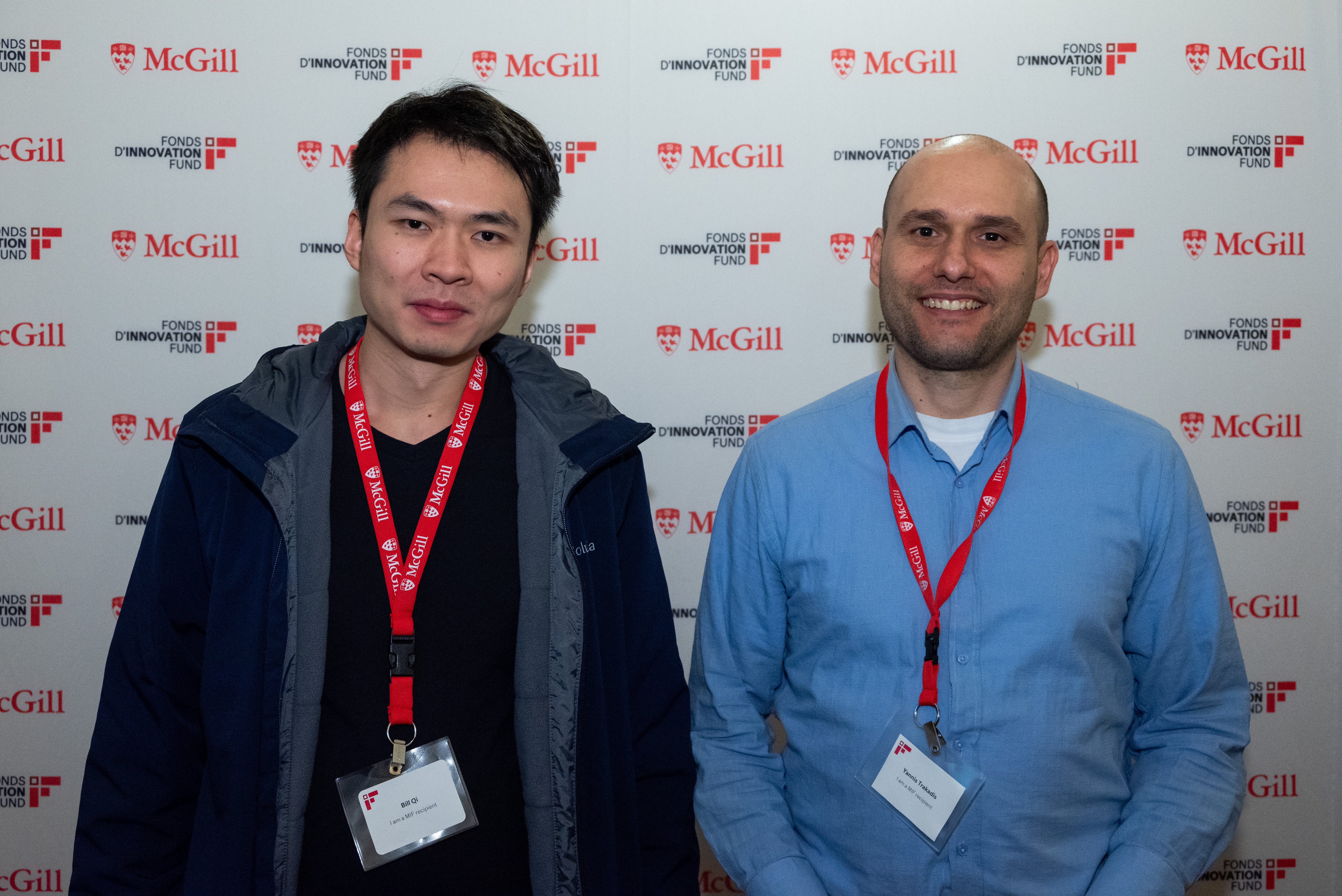
Stage: Discover ($25,000)
Team: Bill Qi and Professor Yannis Trakadis
Faculty: Medicine and Health Sciences
Description: Improving healthcare through personalized treatment using AI and genomics

Stage: Discover ($25,000)
Team: Bill Qi and Professor Yannis Trakadis
Faculty: Medicine and Health Sciences
Description: Improving healthcare through personalized treatment using AI and genomics
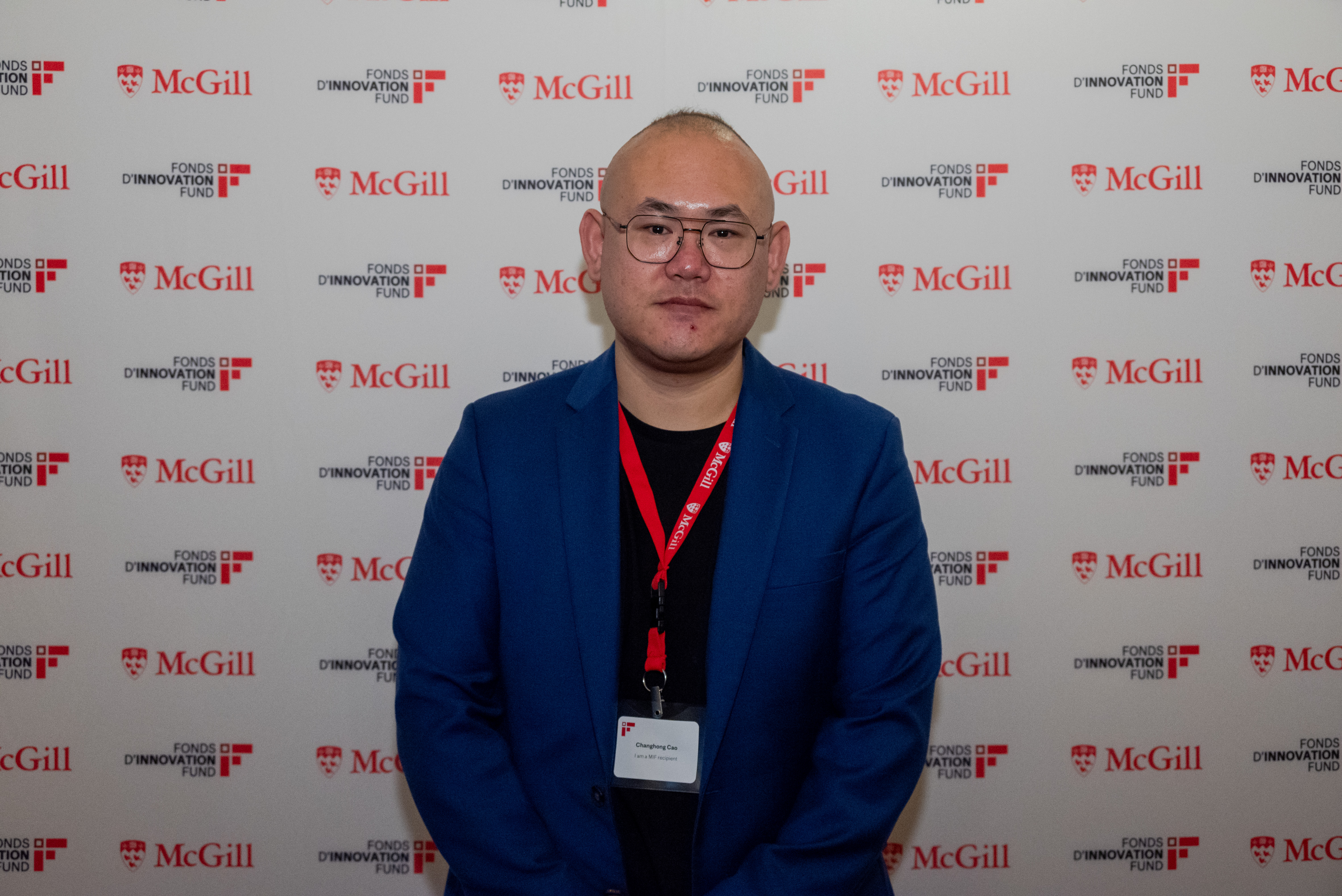
Stage: Develop ($50,000)
Team: Professor Changhong Cao
Faculty: Engineering
Description: Creating cutting-edge characterization devices for 2D materials-based electronics
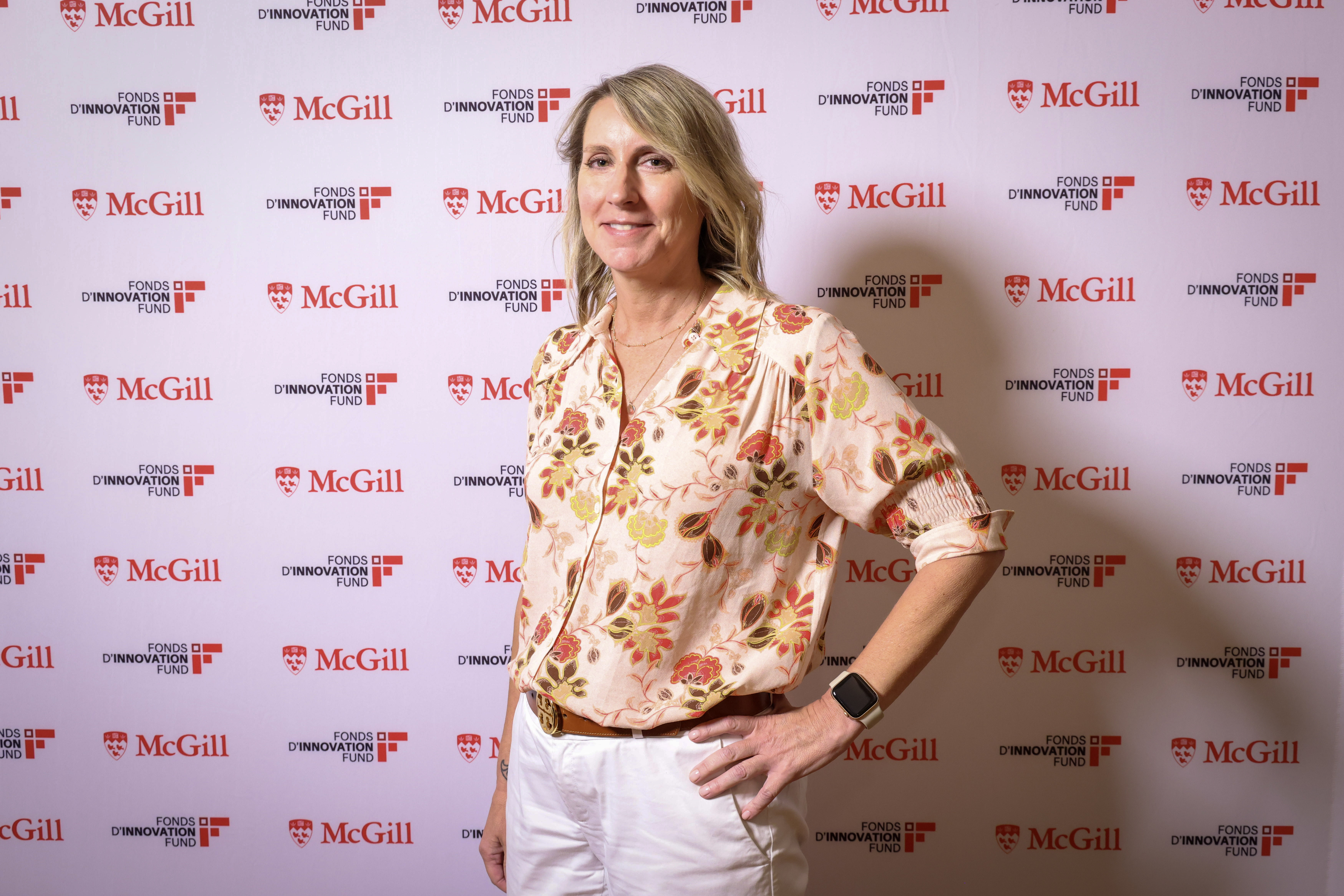
Stage: Deploy ($100,000)
Team: Professor Sarah Kimmins
Faculty: Medicine and Health Sciences
Description: The first company to harness genomics to improve fertility evaluation for men and treatment for couples

Stage: Discover ($25,000) and AMR Award winner
Team: Professor Karien Auclair (not pictured), Professor Andéanne Lupien
Faculty: Science
Description: The project aims to combat the rise of microbial resistance
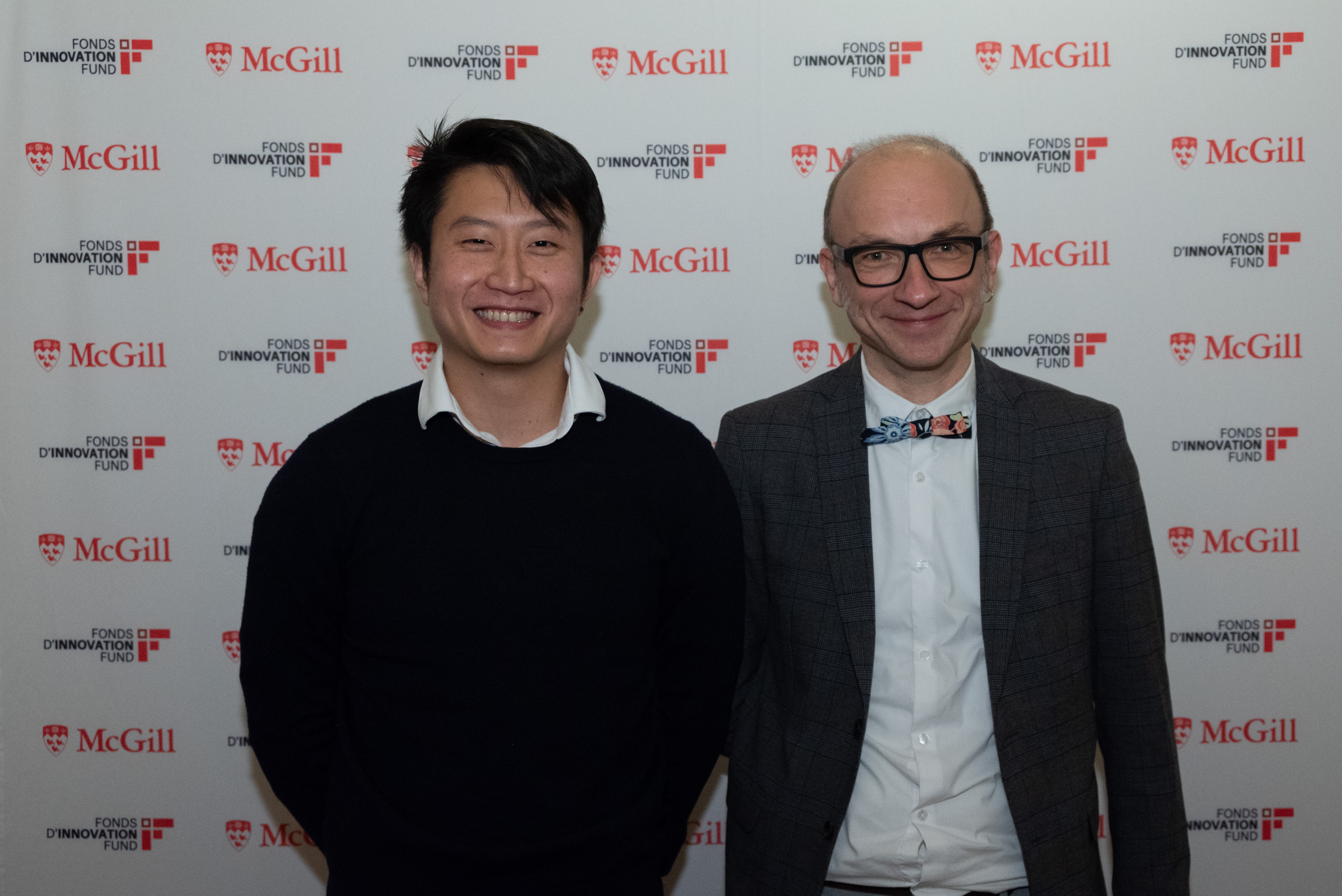
Stage: Develop ($50,000)
Team: Minh Tran and Professor Thomas Szkopek
Faculty: Engineering
Description: Developing sensor technology to enable next generation farming
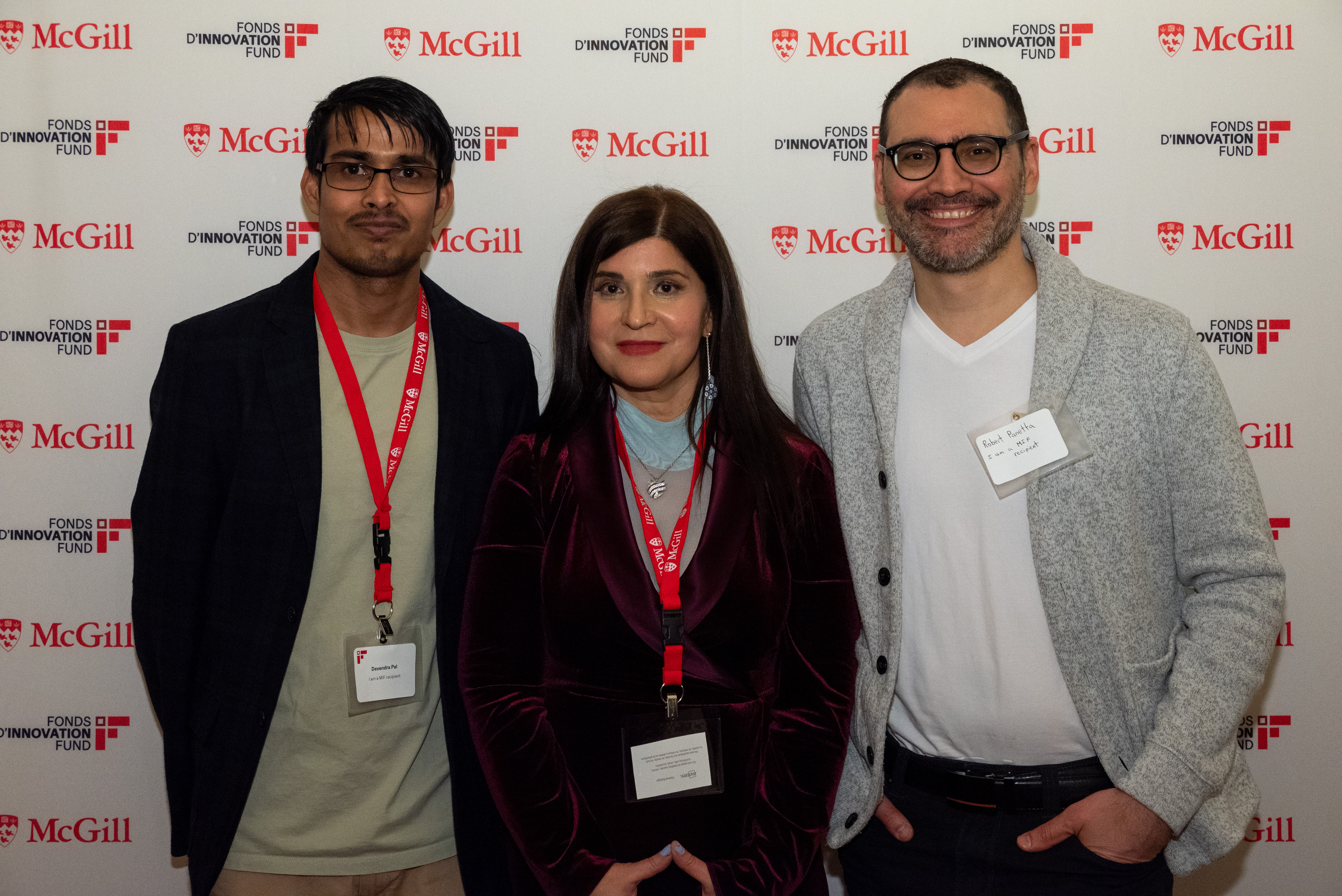
Stage: Develop ($50,000) and AMR Award winner
Team: Devendra Pal, Professor Parisa Ariya, Robert Panetta
Faculty: Science
Description: A first of its kind device for real-time detection of viruses and bacteria, offering on-site diagnostics in milliseconds
 DendroTEK (Professor Timothy Kennedy) - The team has developed a solution to prolong the life of human cells for research. A major challenge for long-term cell culture is that current cell culture substrate coatings are susceptible to degradation by proteases secreted by the cells. This destabilizes the culture, and typically results in cell death. DendroTEK’s game-changing technology provides long-term support for cell cultures, up to 5 times longer. An alumnus of the 1st MIF cohort, the team has demonstrated its technology and is commercially active.
DendroTEK (Professor Timothy Kennedy) - The team has developed a solution to prolong the life of human cells for research. A major challenge for long-term cell culture is that current cell culture substrate coatings are susceptible to degradation by proteases secreted by the cells. This destabilizes the culture, and typically results in cell death. DendroTEK’s game-changing technology provides long-term support for cell cultures, up to 5 times longer. An alumnus of the 1st MIF cohort, the team has demonstrated its technology and is commercially active.
 Altiro Energy (Samson Bowen-Bronet) - Although wind and solar are widely seen as successful renewable energy alternatives to carbon-producing fossil fuels, their intermittent nature requires some kind of storage system to offset their fluctuating power generation. At grid-scale capacity, batteries are prohibitively expensive. Altiro energy is developing a metal-powder based energy storage system that offers high capacity and reusability, at exceptionally low cost.
Altiro Energy (Samson Bowen-Bronet) - Although wind and solar are widely seen as successful renewable energy alternatives to carbon-producing fossil fuels, their intermittent nature requires some kind of storage system to offset their fluctuating power generation. At grid-scale capacity, batteries are prohibitively expensive. Altiro energy is developing a metal-powder based energy storage system that offers high capacity and reusability, at exceptionally low cost.
Capcyte (Hugo Level) – With a focus on biocompatible materials, this team is seeking to develop surface functionalization technology to improve vascular tissue repair. Normal stents used in heart surgery procedures fail 10% of the time in the five years following implantation. Capcyte’s solution aims to recruit the patient’s own cells to regenerate damaged tissue and enable human health.
ClickClot (Professor Jianyu Li) – This project is focused on developing an alternative to the typical way we treat severe bleeding, i.e., using compressed gauze. This is an important issue as uncontrolled bleeding is leading cause of trauma-related deaths. The team has created a liquid-infused, micro-structured bio-adhesive that requires no compression to be effective, has a long shelf life and is as easy to use as conventional band-aids.
HisTurn (Professor Sarah Kimmins) – Around the world, infertility rates are rising, but as couples seek medical interventions to resolve this issue, treatments often focus on female partners. However, the reality is in many cases, the cause is related to infertility of the male. HisTurn proposes a diagnostic to evaluate male sperm at the genetic level and identify associated behaviours that can help alleviate this problem.
Low-Cost Water treatment (Professor Nathalie Tufenkji) – Conventional water filtration techniques rely on high amounts of chemicals used in large volume tanks that leaves behind a toxic sludge that can later pose serious environmental problems related to its disposal. The project proposes a low-cost, easy-to-manufacture solution that utilizes fibrous materials to act as a filtration mechanism. The solution would greatly simplify treating water, and would be more adaptable to both large and small-scale filtration systems.
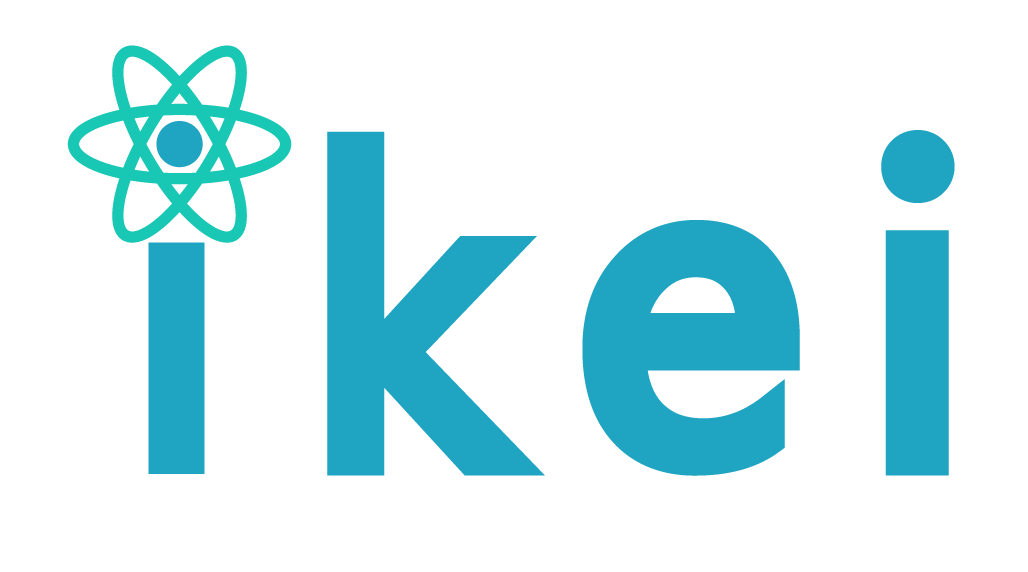 Ikei (Minh Tran) – Traditional soil-grown crop production often means that the vegetables consumed in Canada have traveled huge distances before reaching our kitchens, which increase costs and the impact on the climate. But so-called vertical farming using hydroponic techniques require careful and regular monitoring of nutrient levels in order to ensure high yields. Ikei is developing a low-cost, user-friendly solution to this problem that will help increase profitability of water-based farms, which are known to be more efficient than soil-grown agriculture.
Ikei (Minh Tran) – Traditional soil-grown crop production often means that the vegetables consumed in Canada have traveled huge distances before reaching our kitchens, which increase costs and the impact on the climate. But so-called vertical farming using hydroponic techniques require careful and regular monitoring of nutrient levels in order to ensure high yields. Ikei is developing a low-cost, user-friendly solution to this problem that will help increase profitability of water-based farms, which are known to be more efficient than soil-grown agriculture.
MoSERS (Mahsa Jalali) – Cancer remains a leading cause of death in Canada. One of the keys to effective treatment is monitoring its progress, but this typically involves large pieces of equipment such as MRI machines, and often at infrequent intervals, e.g., every three months. The MoSERS team is developing a solution that can offer non-invasive, easy-to-use and accurate monitoring of cancer that only requires a tiny blood sample that is analyzed using a handheld device. Patients would have the ability to understand the disease’s progress more frequently, and the data would provide practitioners with better treatment options.
Quantus (Yee Wei Foong) – As the world moves to increased electrification of transport, demand for batteries will only increase. But the current standard battery material – lithium – poses several constraints, including long recharge times, expense and issues related to mining this element. The team is developing a nano-graphite battery that potentially offers up to 10x faster recharge times, longer life cycles and the same energy density, all without using rare materials like lithium.
Programmable Shellular Metamaterials (Professor Hamid Akbarzadeh) – Few would doubt the value of shock-absorbing materials such as those found in safety helmets or automobile bumpers. However, in practice they are disposable items that are thrown away after each major collision, thus creating significant environmental impact. The team is developing a bio-mimetic material that can reform after impact, enabling objects to withstand repeated impacts, which can lengthen the service life of the item, and reduce the volume of material that ends up in landfills.
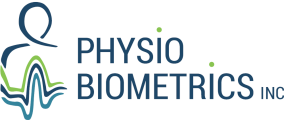 PhysioBiometrics Inc. Every person at one point in their lifetime will experience change or deterioration in capacity to move owing to illness, accident, injury, or aging. Our premier product targets walking, the most valued activity contributing to quality of life. The Heel2ToeTM sensor (Class I Medical Device) helps improve the quality of a person’s gait, giving verbal instruction and feedback to place the heel first when walking. The sensor combined with supporting educational products in our Walk-BESTTM line (BEtter, Faster, Longer, STronger) will make self-management of walking challenges a reality and support remote monitoring and rehabilitation of gait related impairments by therapists. For details see www.physiobiometrics.com
PhysioBiometrics Inc. Every person at one point in their lifetime will experience change or deterioration in capacity to move owing to illness, accident, injury, or aging. Our premier product targets walking, the most valued activity contributing to quality of life. The Heel2ToeTM sensor (Class I Medical Device) helps improve the quality of a person’s gait, giving verbal instruction and feedback to place the heel first when walking. The sensor combined with supporting educational products in our Walk-BESTTM line (BEtter, Faster, Longer, STronger) will make self-management of walking challenges a reality and support remote monitoring and rehabilitation of gait related impairments by therapists. For details see www.physiobiometrics.com
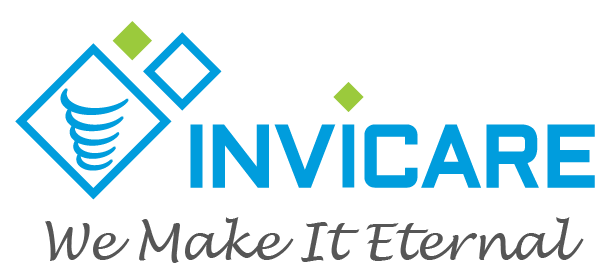 INViCARE develops an innovative biomedical technology to address infections around implants, with a two-fold approach to include prevention and more effective treatment. The company's core technology is a proprietary two-dimensional nanocrystalline hydrogel; the outcome of seven years of collaborative research between McGill scientists and researchers from Harvard Medical School and the University of Montreal. For details, see www.invicare.ca
INViCARE develops an innovative biomedical technology to address infections around implants, with a two-fold approach to include prevention and more effective treatment. The company's core technology is a proprietary two-dimensional nanocrystalline hydrogel; the outcome of seven years of collaborative research between McGill scientists and researchers from Harvard Medical School and the University of Montreal. For details, see www.invicare.ca
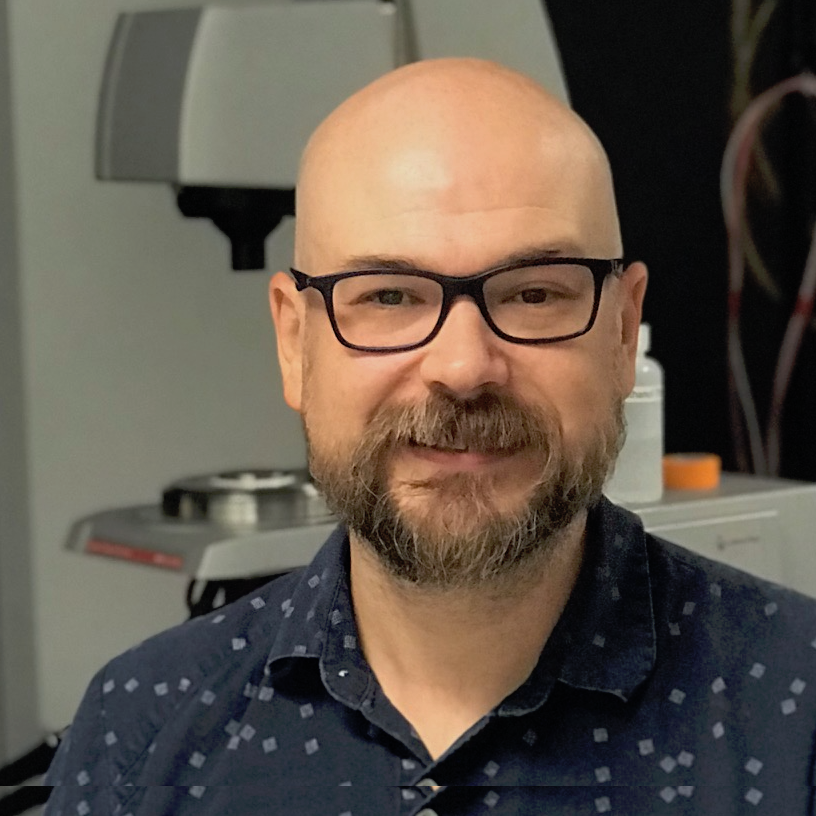 Pattern based Contractile Screening (PaCS) led by Professor Allen Ehrlicher. Cells are not only biochemical entities, but exert significant contractile forces. Defects in these forces are associated with a broad range of pathologies, from cancer and heart disease to asthma. PaCS offers a dramatically simpler, faster, and higher-content approach for contractility quantification. This represents the first industrial translation of cell forces methodologies to a practical and readily implementable approach.
Pattern based Contractile Screening (PaCS) led by Professor Allen Ehrlicher. Cells are not only biochemical entities, but exert significant contractile forces. Defects in these forces are associated with a broad range of pathologies, from cancer and heart disease to asthma. PaCS offers a dramatically simpler, faster, and higher-content approach for contractility quantification. This represents the first industrial translation of cell forces methodologies to a practical and readily implementable approach.
 BioOptic device, led by Professor Mark Driscoll. BioOptic™ seeks to offer a quick and easy way to measure one’s intra-abdominal pressure (IAP) which is shown to influence spinal stability and hence linked to back pain. Specifically, the device design and methods employed will be refined towards improving the accuracy, reliability, and usability of the device to get fully ready for market.
BioOptic device, led by Professor Mark Driscoll. BioOptic™ seeks to offer a quick and easy way to measure one’s intra-abdominal pressure (IAP) which is shown to influence spinal stability and hence linked to back pain. Specifically, the device design and methods employed will be refined towards improving the accuracy, reliability, and usability of the device to get fully ready for market.
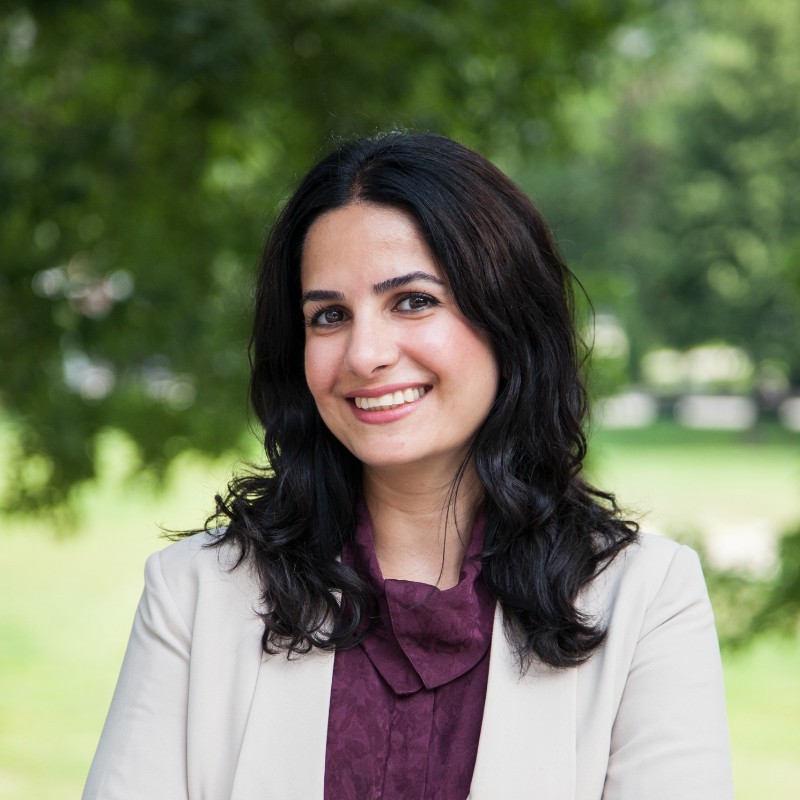 Salivera, led by Professor Sara Mahshid. The project is targeted for molecular diagnosis of respiratory infections like COVID-19 and Influenza A/B via colorimetric detection of RNA in the saliva of the patients in a multiplex and automated fashion. The team's vision is to maintain the accuracy of the gold standard (PCR), while reducing the cost (15$ customer price), time (5 min turn around) and complexity (fully automated sample collection, preparation and detection). More can be seen in this video.
Salivera, led by Professor Sara Mahshid. The project is targeted for molecular diagnosis of respiratory infections like COVID-19 and Influenza A/B via colorimetric detection of RNA in the saliva of the patients in a multiplex and automated fashion. The team's vision is to maintain the accuracy of the gold standard (PCR), while reducing the cost (15$ customer price), time (5 min turn around) and complexity (fully automated sample collection, preparation and detection). More can be seen in this video.
 Polyglycerol dendrimer-based coating, led by Professor Timothy Kennedy. A major challenge for long-term cell culture is that specialized proteins used to coat the cell culture substrate are susceptible to degradation by proteases secreted by the cells. This destabilizes the culture, and typically results in cell death. Our coating provides game-changing support for long-term cultures, in particular for cells derived from human induced pluripotent stem cells (hiPSCs). The team has demonstrated the improved health and long-term stability of cells cultured on this new coating.
Polyglycerol dendrimer-based coating, led by Professor Timothy Kennedy. A major challenge for long-term cell culture is that specialized proteins used to coat the cell culture substrate are susceptible to degradation by proteases secreted by the cells. This destabilizes the culture, and typically results in cell death. Our coating provides game-changing support for long-term cultures, in particular for cells derived from human induced pluripotent stem cells (hiPSCs). The team has demonstrated the improved health and long-term stability of cells cultured on this new coating.
 HisTurn, led by Dr. Sarah Kimmins. There is an urgent need to treat fertility and infertility diagnosis in men given that sperm counts have declined at an alarming rate in the last 40 yrs.. HisTurn will fill a technology and health needs gap by accurately diagnosing infertility in men and providing clinicians with actionable information to allow them to streamline fertility treatment pathways. The team aims to make the clinical journey for couples inclusive of men and to increase the births of healthy children. You can find out more by watching this video.
HisTurn, led by Dr. Sarah Kimmins. There is an urgent need to treat fertility and infertility diagnosis in men given that sperm counts have declined at an alarming rate in the last 40 yrs.. HisTurn will fill a technology and health needs gap by accurately diagnosing infertility in men and providing clinicians with actionable information to allow them to streamline fertility treatment pathways. The team aims to make the clinical journey for couples inclusive of men and to increase the births of healthy children. You can find out more by watching this video.
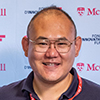 ‘Multimeter’ of the nano-age, led by Professor Changhong Cao. As silicon-based innovations have almost reached their physical limitations, the class of ultra-thin films is one of the most promising alternative building blocks for next-generation electronics to support a range of disruptive technologies including augmented reality (AR), autonomous vehicles (AV) and Internet of Things (IoT). However, evaluating the physical properties of 2DM-based devices has been a major obstacle because of their delicate nature. Our product enables the first discovery of the fracture toughness of functionalized graphene. More information is available in this video.
‘Multimeter’ of the nano-age, led by Professor Changhong Cao. As silicon-based innovations have almost reached their physical limitations, the class of ultra-thin films is one of the most promising alternative building blocks for next-generation electronics to support a range of disruptive technologies including augmented reality (AR), autonomous vehicles (AV) and Internet of Things (IoT). However, evaluating the physical properties of 2DM-based devices has been a major obstacle because of their delicate nature. Our product enables the first discovery of the fracture toughness of functionalized graphene. More information is available in this video.
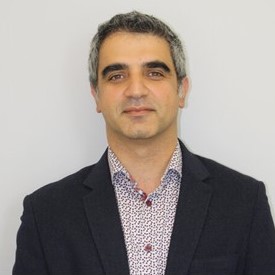 Identification of an Ion Channel Target, led by Professor Reza Sharif Naeini, Department of Physiology. Activation of peripheral pain sensing neurons (nociceptors) is central to the experience of pain, and several chronic pain conditions are caused by the sensitization of nociceptors to mechanical stimuli, including osteoarthritis and rheumatoid arthritis pain. We have identified an ion channel expressed in nociceptors and involved in sensing mechanical pain which represents a potential therapeutic target in chronic inflammatory pain. Determining a small molecule inhibitor to specifically target this ion channel would prevent the pain signal and may have valuable therapeutic potential in OA and RA patients, as well as other inflammatory pain conditions. To learn more watch this video.
Identification of an Ion Channel Target, led by Professor Reza Sharif Naeini, Department of Physiology. Activation of peripheral pain sensing neurons (nociceptors) is central to the experience of pain, and several chronic pain conditions are caused by the sensitization of nociceptors to mechanical stimuli, including osteoarthritis and rheumatoid arthritis pain. We have identified an ion channel expressed in nociceptors and involved in sensing mechanical pain which represents a potential therapeutic target in chronic inflammatory pain. Determining a small molecule inhibitor to specifically target this ion channel would prevent the pain signal and may have valuable therapeutic potential in OA and RA patients, as well as other inflammatory pain conditions. To learn more watch this video.